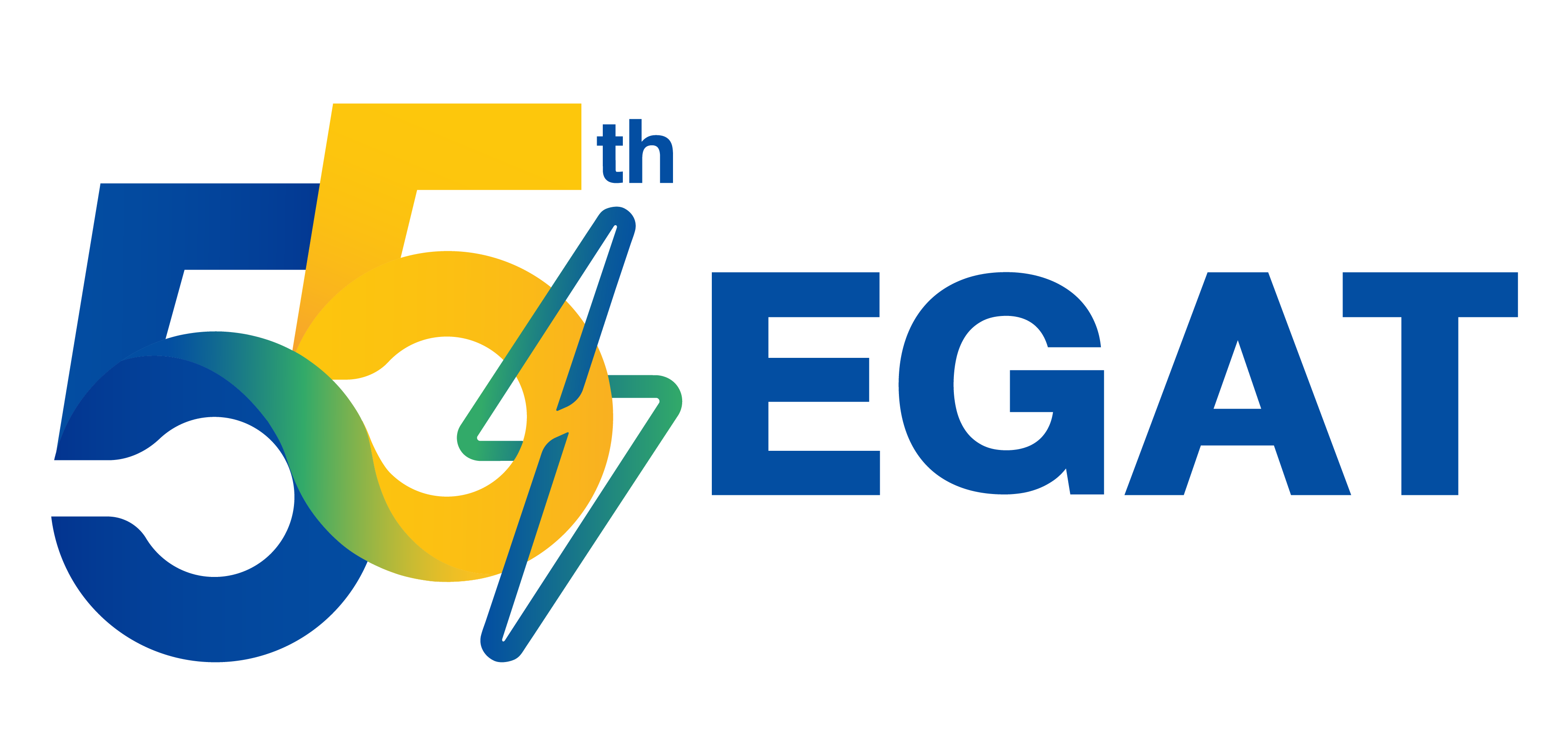Environmental Stewardship
EGAT has undertaken its mission in an environmentally responsible manner to ensure the sound environmental practices are in full compliance with all applicable laws and regulations. EGAT has continuously implemented environmental management systems according to the international standards, such as conducting Environmental Impact Assessment (EIA) reports in order to prevent and mitigate environmental and social impacts. The key environmental issues taken into consideration are as follows:
Study of Environmental Impact of Power Plant Development Projects
Approved Projects
- EHIA for South Bangkok Power Plant Project (Addition): The project was approved by the Expert Committee on Environmental Impact Assessment on May 19, 2022 and the National Environment Board on October 28, 2022.
- EIA for North Bangkok Power Plant Project (Addition), Phase 1: The project was approved by the Expert Committee on Environmental Impact Assessment on April 7, 2022 and the National Environment Board on September 9, 2022.
- EIA for the project of 230 kV Tak 2 – Mae Sod Transmission Network (the part over the area of watershed classification 1): The project was approved by the Expert Committee on Environmental Impact Assessment on October 25, 2021 and the National Environment Board on February 17, 2022.
- CoP and ESA for the project of Smart Energy Development of Mae Hong Son Province: The Energy Regulatory Commission approved the issuance of licenses to operate electricity generation and industry No.88(1) to EGAT. (The license to operate electricity generation No. Kor Kor Phor 01-1(1)/65-1148 dated October 28, 2022 and the license to operate industry No. Kor Kor Phor 02-54/2565 dated October 26, 2022)
Projects under Consideration
- EIA for the project of 230 kV Lamphun 3 – Sob Moei Transmission Network (the part over the area of watershed classification 1): The project was filed to the EIA Smart Plus system on November 27, 2022 and the EIA document was submitted to the Committee on December 7, 2022.
Projects in Study Process and Report Preparation
- EIA for the project of 230 kV Transmission Network and Substation (the part over the area of watershed classification 1) for the project of Hydro-Floating Solar Hybrid, Block 1 at Bhumibol Dam
- EIA for the project of 115 kV Transmission Network (the part over the area of watershed classification 1) for the project of Hydro-Floating Solar Hybrid, Block 1 at Vajiralongkorn Dam
- EIA for the project of 500 kV Transmission Network for the power purchase of the hydropower plant project in Lao PDR (the part over the area of watershed classification 1)
- IEE for the project of 230 kV Khanom – Samui Submarine Cable
- CoP and ESA for the project of Hydro-Floating Solar Hybrid at Ubol Rattana Dam with the net capacity of 24 MWac and installed capacity of 31.2 MWdc
- Environmental report for Lampao Dam Hydropower Plant Project with the installed capacity of 2.5 MW
- Environmental report for Lamtakong Dam Hydropower Plant with the installed capacity of 1.5 MW
Greenhouse Gas Management
Realizing the importance of greenhouse gas management, EGAT has prepared the work plan of greenhouse gas reduction and monitoring. In 2022, EGAT has set up a working group to mobilize the strategy of EGAT carbon neutrality to achieve low carbon organization by 2050, to build sustainable energy security, and to take part in mobilizing greenhouse gas reduction in response to the government policy.
EGAT has quantified the greenhouse gas emissions of the organization (corporate carbon footprint) in accordance with ISO 14064-1: 2018 covering EGAT’s operational areas, such as power plants, mine, dams, offices, and transmission system. In 2022, the direct greenhouse gas emissions from the organization’s activities and the indirect emissions from energy use (types 1 and 2) amounted to approximately 32.93 MtCO2e. Moreover, the information on greenhouse gas emissions from the electricity generation process was used in the eco-efficiency assessment as guidelines for sustainable production and consumption.
In 2022, EGAT’s goal of greenhouse gas reduction was 4.5 MtCO2. From the operation throughout the year, EGAT could decrease greenhouse gas emissions of 8.38 MtCO2 (from the preliminary assessment) resulting from three measures comprising electricity generation from renewable energy, efficiency increase in electricity generation, and standard criteria and No.5 labeling. EGAT’s measurement, reporting, and verification (MRV) has been endorsed by the EGAT Committee on Greenhouse Gas Management before being annually proposed to the Energy Policy and Planning Office for conducting the country report.
Environmental Quality Monitoring
EGAT has a strong determination to adopt measures to prevent and control the environmental impacts which might occur as a result of EGAT’s operation, in particular the organization’s emissions to the air such as sulfur dioxide (SO2), nitrogen oxides (NOx), and carbon dioxide (CO2). Moreover, EGAT continuously monitors the noise level, water quality, water ecosystem, quality of life, as well as garbage and waste management. Discharges to the water have been managed in compliance with all applicable environmental laws including the improvement of the overall environmental quality.
Sustainable Resource Use
EGAT continues to pursue clean and green energy sources by promoting the development and consumption of renewable and alternative energy, ranging from hydropower, wind, solar, geothermal, and biomass. In 2022, a total net energy of 14,688.35 million kWh from clean energy sources was produced in EGAT’s power generation system.
